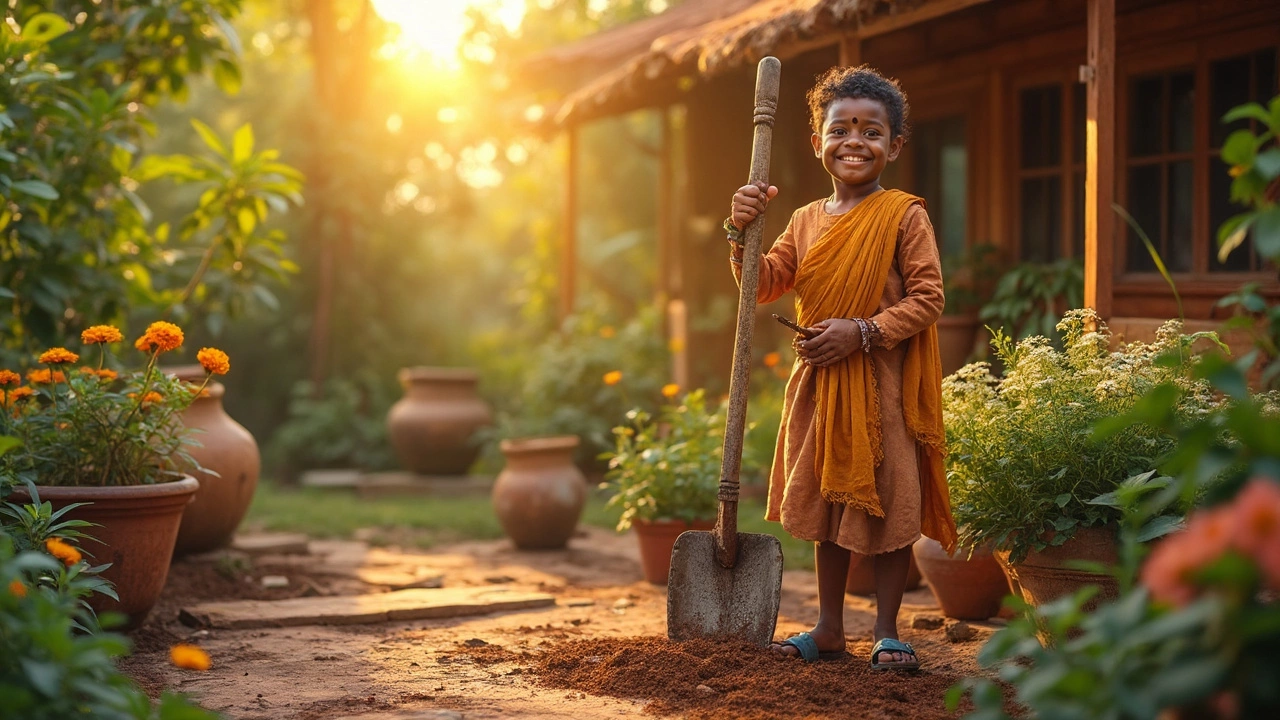So many garden tools exist, but which one matters most? This article digs into the single most important gardening tool and tells you why it’s crucial for beginners and pros alike. You'll get useful insights, some fun facts, and practical tips on tool care and alternatives. Even if you’re just starting out, you’ll learn how to make the most of your garden with the right gear in hand.
Hand Trowel: The Essential Garden Tool for Indian Gardeners
When you think of gardening in India—whether it’s a tiny balcony, a backyard plot, or a rooftop veggie patch—the hand trowel, a small, handheld digging tool with a sturdy blade and comfortable grip, used for planting, weeding, and turning soil. Also known as a garden trowel, it’s the one tool you’ll reach for before anything else. It’s not fancy. It doesn’t need batteries. But without it, you’re trying to grow plants with your fingers—and that’s not just inefficient, it’s frustrating.
A hand trowel, a small, handheld digging tool with a sturdy blade and comfortable grip, used for planting, weeding, and turning soil. Also known as a garden trowel, it’s the one tool you’ll reach for before anything else. is what lets you dig precise holes for seedlings, mix compost into dense clay soil, or pull out stubborn weeds without damaging nearby roots. In Indian gardens, where soil often turns hard in summer and soggy in monsoon, the right trowel makes all the difference. It’s the tool that connects you to the earth—not just as a gardener, but as someone who understands what’s happening under the surface. You don’t need a power auger for a potted basil plant. You need a hand trowel. And if you’ve ever tried to transplant a young tomato seedling with a spoon or a fork, you know why this tool matters.
It’s also the tool that ties into every other gardening task you do. Need to loosen dense soil? Use a hand trowel to break it up before adding compost. Setting up a drip system? Dig a small trench to bury the line. Planting marigolds along your terrace edge? A hand trowel makes it quick and clean. Even when you’re working with containers, it’s the only tool that fits in tight spaces. You’ll find it referenced in posts about garden soil improvement, balcony gardening, and compost ingredients—because no matter how big or small your space, you need to get your hands dirty in a controlled way. And that’s exactly what a hand trowel lets you do.
Some people think you need fancy tools to be a serious gardener. But the truth? The best gardeners are the ones who know how to use the basics well. A hand trowel isn’t just a tool—it’s an extension of your intent. It’s what lets you move from watching plants to growing them. You’ll find it in posts about garden tools, instruments used for planting, digging, pruning, and maintaining plants in home and small-scale farming settings, and you’ll see it in action when people talk about plant care, the daily and seasonal practices that keep plants healthy, including watering, feeding, pruning, and soil management. It’s not glamorous. But it’s necessary. And in the quiet moments between rain showers and sunburns, it’s the one thing that never lets you down.
Below, you’ll find real stories from Indian gardeners who use a hand trowel every day—whether they’re fixing poor drainage in clay soil, protecting zinnias from rabbits, or choosing the right spot for hydrangeas on a south-facing balcony. These aren’t theory posts. They’re practical, tested, and grounded in the soil you’re working with. You’ll learn how to pick the right one, how to keep it from rusting in humid monsoons, and why the simplest tool often does the most important job.
